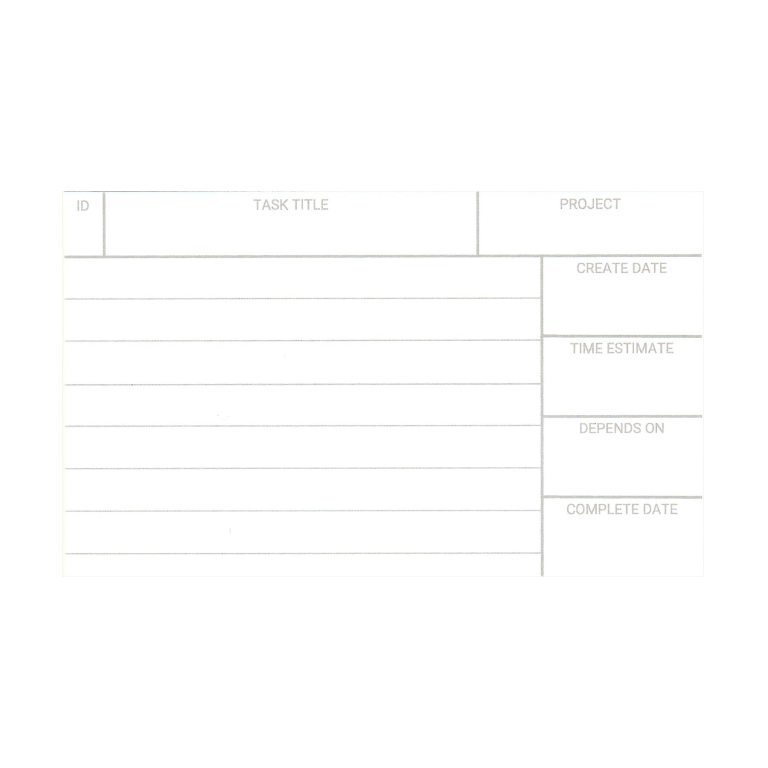https://warrenpaper.com/product/1003/

They are useful for other ptirposes, besides Essay-writing and Speaking. For instance, for Addresses,for Bills, and for Memoranda.
Unsurprising given that card systems were used for accounting in the early 1900s, but not many manuals cover the use of a card index for addresses (aka Rolodex) of for bills or memoranda.
At first, also, it might be thought that the Cardswould be inconvenient to use, but the personal ex-perience of thousands shows that, at any rate forbusiness-purposes, exactly the reverse is true
Miles' uses the ubiquity of card systems (even at the writing in 1899, prior to publication) within business as evidence for bolstering their use in writing and composition.
(Recall that he's also writing in the UK.)
Brooklyn Engineers’ Club. Brooklyn Engineer’ Club Proceedings for 1906: Constitution and By-Laws and Catalogue of Reference Works Added to the Library During the Year. Brooklyn Engineers’ Club, 1907.
Macey Filing Appliances 1906<br /> Catalogue No. 4206<br /> The Macey Co.<br /> https://archive.org/details/macey-filing-appliances-1906/mode/2up
[Narrator]: The Cluttered Desk, Index Card,file folders, the in-out basket, the calculator.These are the tools of the office professional's past.Since the dawn of the computer age, better machines have always meant bigger and more powerful.But the software could not accommodate the needs of office professionals who are responsiblefor the look, shape and feel of tomorrow.
In 1983, at the dawn of the personal computer age, Apple Inc. in promotional film entitled "Lisa Soul Of A New Machine" touted their new computer, a 16-bit dual disk drive "personal office system", as something that would do away with "the cluttered desk, index cards, file folders, the in-out basket, [and] the calculator." (00:01)
Some of these things moved to the realm of the computer including the messy desk(top) now giving people two messy desks, a real one and a virtual one. The database-like structure of the card index also moved over, but the subjective index and its search power were substituted for a lower level concordance search.
30 years on, for most people, the value of the database idea behind the humble "index card" has long since disappeared and so it seems here as if it's "just" another piece of cluttery paper.
Appreciate the rosy framing of the juxtaposition of "past" and "future" jumping over the idea of the here and now which includes the thing they're selling, the Lisa computer. They're selling the idealized and unclear future even though it's really just today.
card system are indebted tothese catalogues for their information. But all these publications areprimarily concerned with the particular cabinet or file of the firm inwhose interest they are published.
Variations of card index systems were published in booklet form by filing cabinet manufacturers as a means of selling not only their cabinets, but their systems for using them was common in the early 1900s. Examples of magazine advertisements in System Magazine back this up. It is also specifically highlighted in a review of J. Kaiser's book "The Card System at the Office" from Ironmonger (1909-10-03) which appreciates a more fully fleshed out version of a card index system in book form without mention of specific manufacturing firms.
Summaries*
examples of specific workflows within Kaiser's card system
The development of the card system and itsmore universal adoption within recent years isundoubtedly due in the mail to the development in modernbusiness and factory organisation ; it may be regarded as anoffspring of manufacture in quantities. (Massenfabrikation, Gross-industrie.) The recognised principle in manufacture in quantities ismaximum of output with minimum of labour. The means to attainthis end is specialisation, which in its turn yields greater precisionand accuracy as it^ result. All this is equally applicable to thecard system, and the last factor, greater precision and accuracy,is one of its most conspicuous claims.
Julius Kaiser contemporaneously posits that mass manufacture and maximizing efficiency (greater output for minimum input) are the primary drivers of card index system use in the early 20th century. These also improve both precision and accuracy in handling information which allow for better company or factory operation, which would have been rising concerns for businesses and manufacturing operations at the rise of scientific management during the time period.
Office Organisation, of which the work here discussed forms part, 2has been considerably modified within recent years, and Avhatis called the " card system " has now come very much into vogue.
The nebulous, but colloquial "card system" was a common, but now lost moniker for the use of a card index in business settings in the early 1900s.
Wigent, William David, Burton David William Housel, and Edward Harry Gilman. Modern Filing and How to File: A Textbook on Office System. Rochester, N.Y.: Yawman & Erbe Mfg. Co., 1916. http://archive.org/details/modernfilingate02compgoog.
mindex.THIS is the name Howard L. Wilson, of Rochester, N.Y.,hasgivenhisvestpocket cardsystem.Itisa
Geyers Stationer. “Memindex Advertisement.” Geyer’s Stationer: Devoted to the Interests of the Stationery, Fancy Goods and Notion Trades, September 15, 1904. https://www.google.com/books/edition/Geyer_s_Stationer/L507AQAAMAAJ?hl=en&gbpv=0
Howard L. Wilson of Rochester, NY named his vest pocket card index system the Memindex.
Vintage 1900 Macey Card Business System Fred Macey Company Original Ad 1021 A2<br />

https://www.ebay.com/itm/275147213477
Copy in notes folder as backup

Copy in Notes folder.